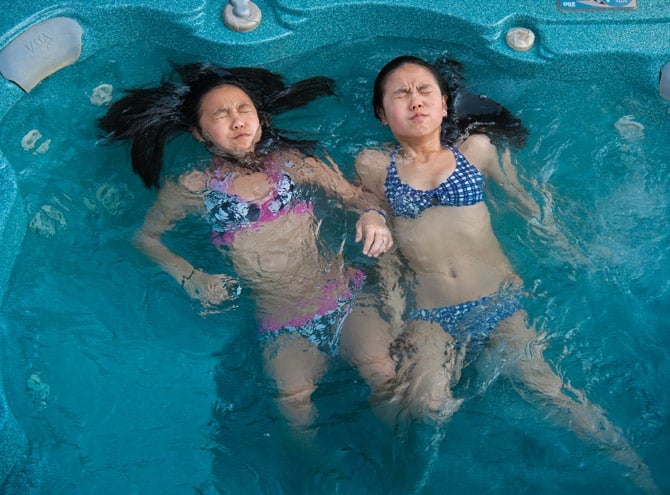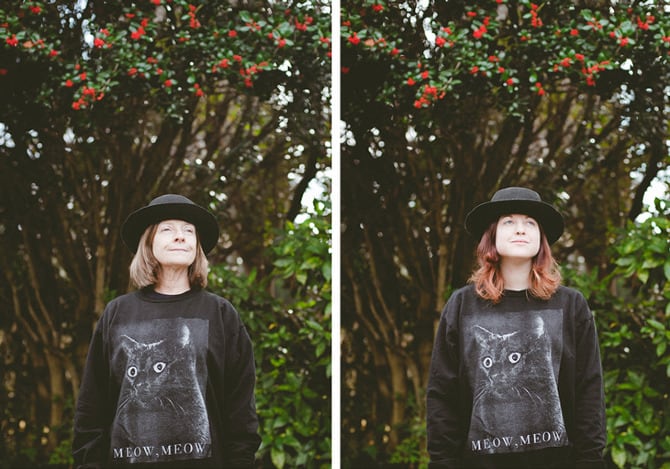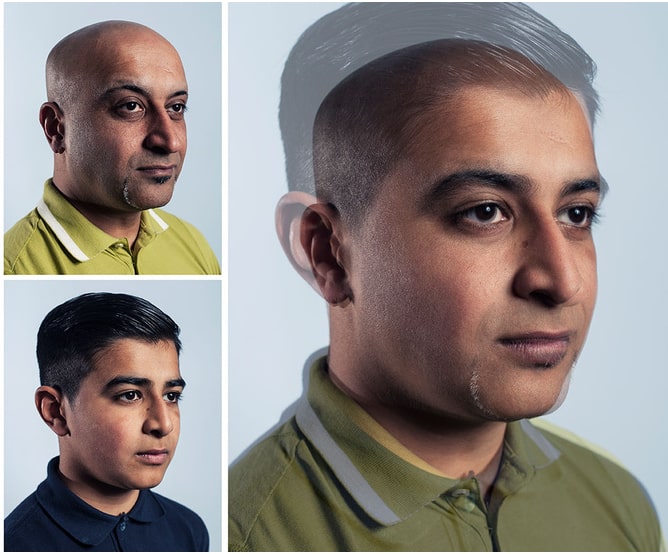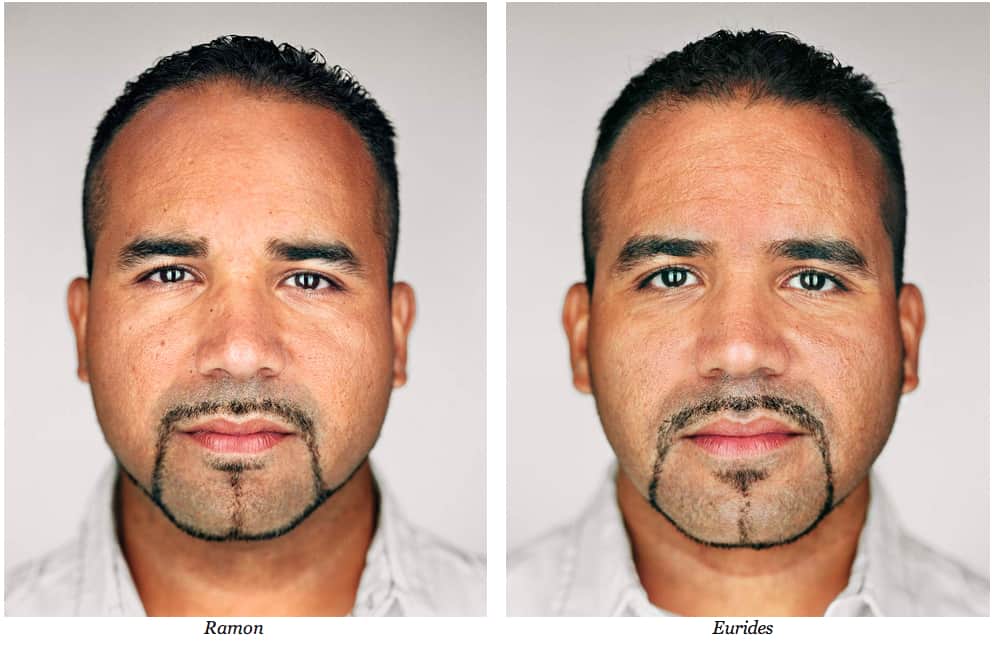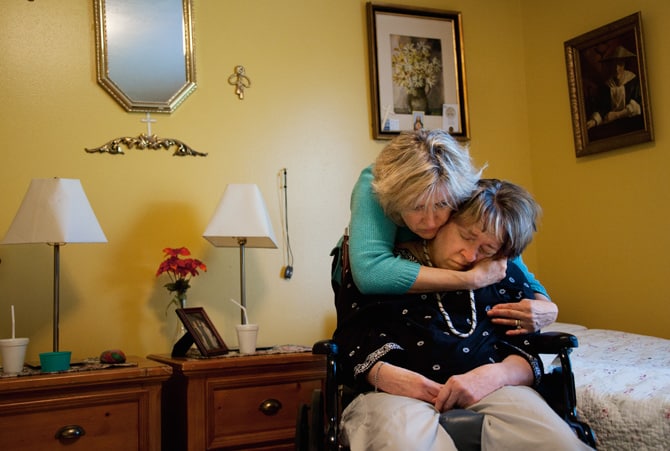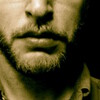These days, life, in general, weighs differently. I’m not yet forty, but with my thirties mostly behind, I am a new denizen of the vast realm called “the middle-age.” My physical body is no longer fueled by the energy of youth. Yes… it is true, bodies change as we get older – I get it. What interests me, though, is my body’s response to what I can only call “existential weight.” I carry this weight in a particular way.
I see the consequences of this existential weight when my body responds to sin and virtue writ large in headlines across the world. Thoughts of war, poverty, addiction and disease nestle themselves in that hollow just below my voice box and above my ribcage. Then there is the crease above my brow that does not quite go away when I stop concentrating on issues in my every-day life. Jobs, relationships, and responsibilities create a constant tension in my forehead, shoulders and jaw. The physical effects of our own attitudes and decisions are written on our faces, while invisible headlines stream through our minds. Joy, regret, peace, anxiety – thousands of little thoughts and feelings we have every day – they are in us, part of us, and they reveal themselves in the shapes our bodies take.
So, I have been looking to images of human beings lately. Who I am, who I am becoming, or who we are as a species, as one body, one mass of humanity… this is what I am really looking at. What do we see when we see others? What do they see when they see us? Is it narcissism to be aware that others see us? Is it only curiosity that leads us to gaze back at them? There is a balance between our external and internal images of self that are more than a matter of “who it is that we think we are” vs. “who it is that others think we are.” We all live with the truth that no one gets to make sense of our insides and try to match them up with our outsides except for us.
Maybe that is why I love the particular series of pictures that are set out below: Five Sets of Faces you May Never Know. There may be nothing new here for some of you, as most of these pictures have been run in a number of different publications. But to me they are reflections on mortality, the passing of life from generation to generation, and the different ways we hold life experience. These are all people that we probably do not know. Yet, when we see them, we recognize someone. We see entire lives caught in a single instant. In these images, we can become aware of moments in our own lives. Somehow in the process of reflecting on photographs of others, we hope to catch a glimpse of ourselves.
(The pictures at the start of each section are just a teaser, so make sure you follow the links to see each series in its entirety.)
* * *
1. Mother + Daughter, Cara Sykes
Cara Sykes has offered a small explanation of why she chose to take a series of mother/daughter pictures: “It is inspired by my uncle always joking with my mom and asking her if she is wearing my clothes.” And with only a camera, and that one thought, she is off. We wind up with a series of obviously posed pictures that are by turns absurd, cute, funny and insightful. I am not sure if there is any deep philosophical meaning behind their obvious whimsy, and maybe that is why I like them so much.
A daughter decides to take a series of photos that show herself and her mother dressed in similar clothes. The one is trying to mirror the movement of the other. Is it absurd that the mother is wearing the same clothes as the daughter? Perhaps not as absurd as them both sitting in a bathroom wearing motorcycle helmets and shirts from a country western thrift shop. Just two people having fun, inviting us to come along.
We do not know who went first. What we do know is that, at some point, one picture was taken and then another. How they hold their tension in their bodies is different. How they lift their eyes, how they smile, how they stand, sit…it all reveals two totally different people. The hitch? Well, the one would not even exist without the other, now would she? Exactly. And they know each other well, and try to do what the other one does. And it’s at once almost alike, and at the same time not even close. But they are deeply conscious of the debt that they each owe to one another in their trying to imitate each other. Perhaps more than we can say for some parents and their adult kids.
* * *
2. Boys and Their Fathers, Craig Gibson
In Craig Gibson’s photography, we see intergenerational interplay in a different way. These images of father and son leave me reflecting on the nature of heredity. From generation to generation we pass along parts of who we are to the people who come after us. For better and for worse, we are like the people that first brought us into the world and mentored us. We look like our parents, this is true, but we also pick up bits and pieces of who they are, often without choice. It is only when we reach a certain age that we are able to begin questioning what it is that our parents have passed on to us with regard to certain behaviors. Of course, it is often the case that the parts we love about our parents are often mingled with the parts we struggle to love.
So, we have a series of photographs. Big ears and small eyes, sloped forehead, strong chin, well there is no telling who was going to get what. How about those other things we get from our parents? Big hearts or narrow views of life, a drive for success and an incapacity to hold our tongues? We get it all from somewhere, but a lot of it starts with the people who we knew first. What we pick up in our youth often defines what gifts we will end up honing, and what shortcomings we will seek to mitigate. We will work with these traits for the rest of our lives. It does us good to get to know both our angels and demons, because they will be with us for a long time. Thankfully, while we never leave behind the people that our forebears shaped us to be, we get to choose how we will live in our own skin.
* * *
3. A Thing or Two About Twins 1 & 2, Martin Schoeller and Jodi Cobb
After all, what would we say if our skin happened to look just like someone else’s? With the photos of twins from Martin Schoeller and Jodi Cobb, we see people who are genetically identical, yet strikingly unique. We all know people who have a similar build or mannerisms as a sibling. Twins, however, are particularly interesting because they share the same DNA. The differences between them are purely developmental. Behavioral and physical environmental factors, ranging from early life-experiences to the types of diets they are exposed to, will alter how they develop into individual beings.
So it is with us all. We are affected by our environments. Many of us, though, never get to know what it is like to share life with someone so much like ourselves. The “party” question of “What if I was born in a different place and time?” usually neglects the fact that if we were born at a different place and time, we would not be who we are now. What we put into our bodies and how we feed our minds affects us at levels we can only barely comprehend. Who we are is as much a matter of biology as it is our own human experience.
This is the tricky bit: when we see others, we can see ourselves reflected in them. It is impossible to answer that question unless we get to know our own ideas and emotions, and then the other person’s. Even then, “who we really are” is not altogether clear. With twins we see that despite how we look on the outside, we are never going to know what is happening inside another person. Despite how we feel on the inside, might we also be more like others than we often acknowledge.
* * *
4. Reflections: Portraits of the Elderly As They Once Were, Tom Hussey
With the pictures offered by Tom Hussey, we see a tender, and shockingly immediate depiction of people as they were then and are now. The grace of reflections, and the grace of photography is that we see ourselves physically. With reflections in a mirror, we see ourselves as we are now (though a bit backwards). With photography, we see ourselves as we looked then, though some photos are more flattering than others. The point is, in both cases we get to see ourselves as others see us, but always with a bit of distortion. Yet, in understanding what emerges in us when we see particular images of ourselves, and comparing those images with ones that came before or after, we sometimes catch sight of the truth. in both cases, something of the truth of our existence.
The assembly of beliefs and sentiments that tile in the mosaic of our personalities are difficult to ever get a really clear look at. These emotions and ideas always shape our perception of who we are, who we were, and who we will be. The more we gaze past the image, the more we come to understand. When we look at a picture of the way things were, or when we see how things have changed, there is an entire process of reflection that occurs. This is the place of true sight. The question is: how will we see ourselves in the years to come? “How will we look when we are old?” is not the question. We will look as we look. The question is, “how will our older selves look back on our younger incarnations?” Will it be with a smile? With longing? With appreciation?
* * *
5. Timelapse of the Imperceptible Effects of Aging, Anthony Cerniello
Only time will tell. With this final submission by Anthony Cerniello, we see the entirety of a single being, told through a collage of pictures from people in the same family over multiple generations. Is this the story of one family? Is it the story of an imaginary character? Maybe it is a testament to everything that this current reflection is about: images of people, generations, emotions, lives changing over time, and even the human family.
* * *
Regardless, when we open ourselves to taking the “long-view” of our existence, something in us changes. We can reflect on our life as a single narrative, that winds its way through others’ narratives. We see the flourishing of works and relationships to which we gave our time and energy. We live with the hardship or regrets of choices we made in our less insightful (or downright stupider) moments. Our actions take on greater weight as enter into the awareness of our lives. Yet, we also learn to bear things a bit more easily. As we have done, so have others. As those who have come before us have passed, so too will we pass. How will it look when it is all finished, only time will tell. In the meantime, we have a lot of living left to do.
———
Editor’s Note: The images used in this piece all come from the respective collections of images found in their entirety by following the links at the top of each section. The cover image is taken from Jodi Cobb’s “A Thing or Two About Twins” available here.

